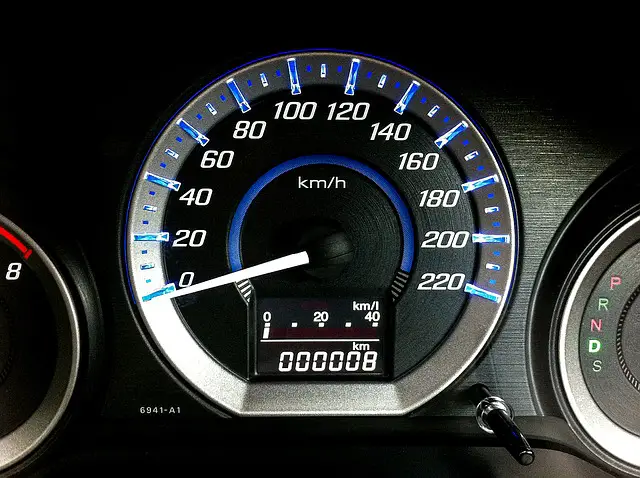If you have a WordPress blog, it is not enough that you upload good content, you need to make sure the speed of the blog is excellent. And for that, you need WordPress-optimized hosting.
According to the Hosting Tribunal
- Users are ready to tolerate a page load time of about 2-3 seconds.
- 60-second delay in page loading time can reduce the user’s satisfaction by 16 percent.
You can see that the bounce rate increases if your loading time goes up, which reduces the user experience. User experience is proportional to the loading time of your blog and the content readability factor.
Here are a few factors that tend to reduce the speed of your website
- If the hosting server is not configured correctly, it may hurt the rate eventually
- Cached pages help speed the site, which is why when caching does not work, your site slows down incredibly
- You will run the blog with images, which means you need to optimize it for the server. However, if your images are not optimized, then you might experience an increase in the loading speed
- A plugin that is poorly coded can reduce the site’s speed significantly
- There are external scripts such as ads, and font loaders that can impact your website’s speed significantly
If you are facing issues with the page speed of your WordPress blog, these WordPress development tips are here to help you. In this blog post, we will discuss with you how you can increase the page speed of your WordPress blog, and make customers stay on your page.

How to increase page speed in WordPress
Use these tips to increase the page speed of WordPress websites today:
1. Go with good hosting for a WordPress blog
If the hosting for the WordPress blog is not properly configured, your website speed may be reduced significantly.
It is important to choose a good hosting solution before you start preparing your WordPress blog for some good content. Before impressing your users with what you know, impress them with good speed, and make sure they don’t have to wait for the blog to open.
A lot of you tend to go for price against quality when it comes to a hosting solution. Well, it might seem easier on your pockets and even a good thing at the start but, with time, you need powerful hosting. The reason is you are going to have a lot of images, and embedded videos and get lots of people on the blog.
It doesn’t hurt to invest a little at the start to grow your business with time and make it profitable. Good WordPress hosting always pays in the end.
Choosing a web hosting plan with a good reputation for speed and reliability. Providers like A2Hosting, SiteGround, WP Engine, and Bluehost all offer plans specifically optimized for WordPress. These plans come with features like automatic WordPress updates, built-in caching mechanisms, and Content Delivery Networks (CDNs)
2. Use good caching plugins
It is essential to cache your website so that the user can load the same page with double the speed. What will cache plugins do?
It will help improve the caching experience, which means the server will store the last view of the site. Your HTML, CSS, and JS codes will be saved, and your user won’t need to connect with the server again to view these pages.
You need to find a plugin that can easily integrate with the WordPress blog or your WooCommerce website. Apart from browser caching, it should also provide support for vanishing and should be able to optimize the database for you.
Installing a caching plugin like WP Super Cache or W3 Total Cache. These plugins create static copies of your website’s pages so that subsequent visitors can see the cached version instead of waiting for the server to generate the page from scratch. This is similar to how your web browser caches frequently visited websites to improve loading times.
3. Compress media to optimize images
Images are an excellent way to increase the visits to your site, and even improve the site’s engagement levels. However, when you use images, you ought to be very careful.
You need to make sure you use either vector images or optimized ones that will help keep up the site’s speed, and ensure that your visitors don’t walk away.
The images tend to give a clearer picture of your content, which is why you need to compress the media files using appropriate plugins. WP Smush is one such plugin that you can opt for. Choose the plugin carefully and make sure to install it before the site is out for the visitors.
Use a plugin like Smush or ShortPixel to optimize your images. These plugins can reduce the file size of your images significantly, often by using techniques like lossless compression which removes unnecessary data without affecting image quality.

4. Uninstall the unused
Images in the media library or the plugins that take up a lot of space but remain unused need to go away from your website’s server.
We tend to download several plugins that are never useful, and it takes away the site’s speed. That is why you should uninstall all of them.
Have only those plugins that intend to optimize your site’s performance and increase your visitors as well as engagement. Some plugins help you know which plugins are unnecessary.
Regularly reviewing your installed plugins and deactivating or deleting any that you’re not using. Plugins can add extra code to your website’s pages, which can slow down loading times.
5. Optimize with CDN
Content Delivery Network is one of the most powerful techniques used to optimize your site for speed. It is a system that allows you to make use of the distributed servers to deliver the content.
You can use either the origin of the web page or the geographical location of the web visitor to perform content delivery. This is the perfect solution in case you want to attain or already have a global user base and deal with continuous and high-volume traffic.
Signing up for a Content Delivery Network (CDN) service like Cloudflare or Amazon CloudFront. A CDN stores copies of your website’s static content (images, JavaScript, CSS) on servers around the world.
This means that visitors can access these files from the nearest server location, which can significantly improve loading times for users who are geographically distant from your main web server.
6. Minify JS, HTML and CSS Files
Minification is essential if you want to achieve the best results. There are times when you receive a warning while testing your site for speed regarding the CSS, HTML, and JS files.
What does this mean? You need to ably reduce the number of server calls made by these files to reduce the server response time. It will not only help reduce the loading time but also improve bandwidth usage.
Use a plugin like Autoptimize or WP Rocket to minify your website’s code. Minification removes unnecessary characters like whitespace and comments from your code, which can reduce file size and improve loading times.

7. Say no to hotlinking
Using another website’s resources on your website is quite common. However, when you load your site with another’s images, then you are also occupying the bandwidth of your server.
Avoiding the practice of hotlinking to images or other resources on other websites. Hotlinking uses the bandwidth of the other website’s server and can slow down your website’s loading times. It’s also generally considered bad practice as it uses someone else’s resources without their permission.
Hotlinking, as this whole thing is, can reduce the speed of your website. That is why you should avoid it as much as possible. If you need to display an image from another website, contact the owner for permission.
Conclusion
In short, you need to optimize your website not just for the database, but also for the images and other files. Make sure you also optimize the content delivery so that speed is not a concern for your website.
Don’t make the mistake of compromising performance over speed. Ensure that you use practices that help the two go hand-in-hand.
Atman Rathod is the Co-founder at CMARIX TechnoLabs Pvt. Ltd., a leading web and mobile app development company with 13+ years of experience. He loves to write about technology, startups, entrepreneurship and business. His creative abilities, academic track record and leadership skills made him one of the key industry influencers as well.

